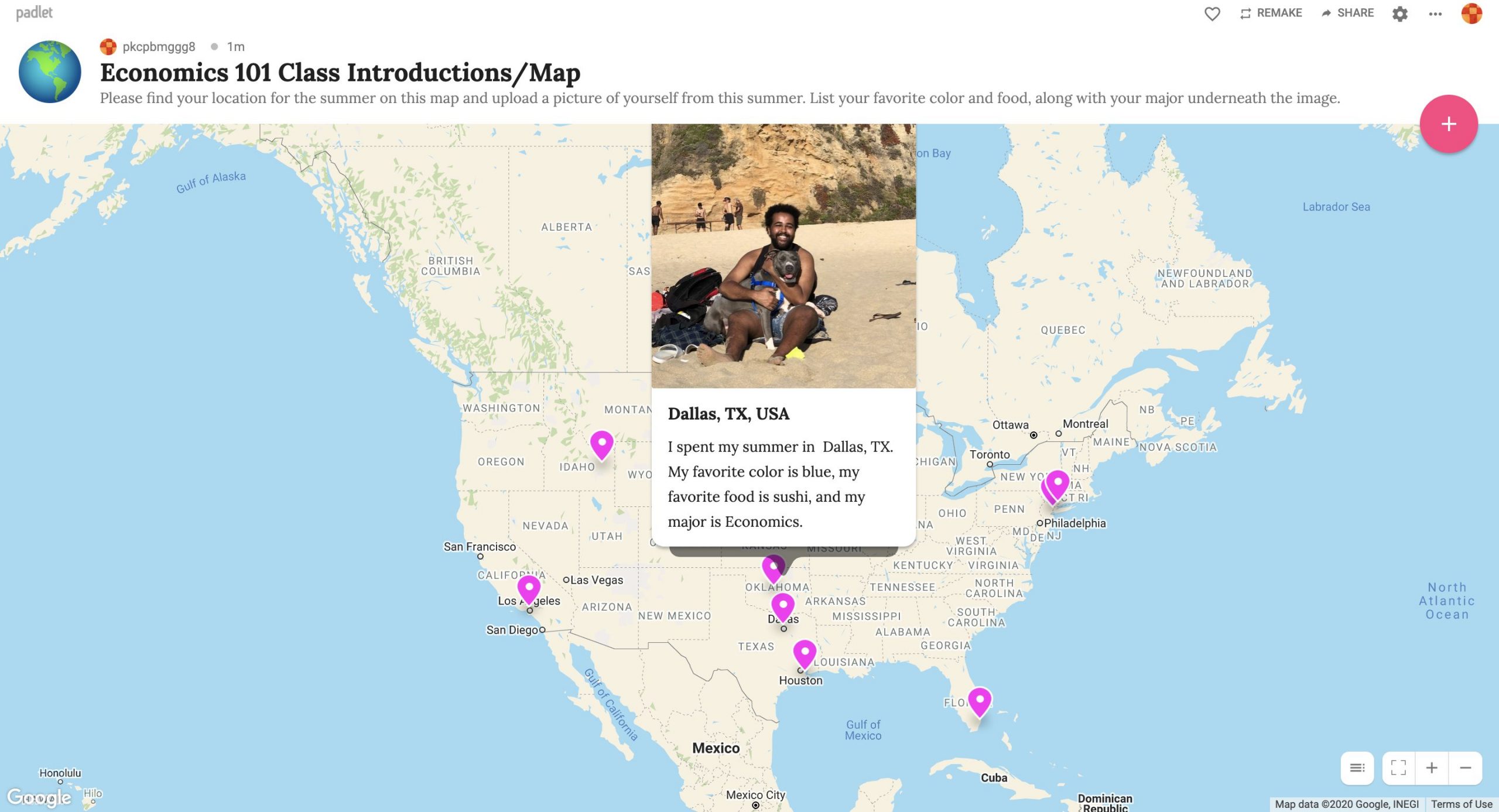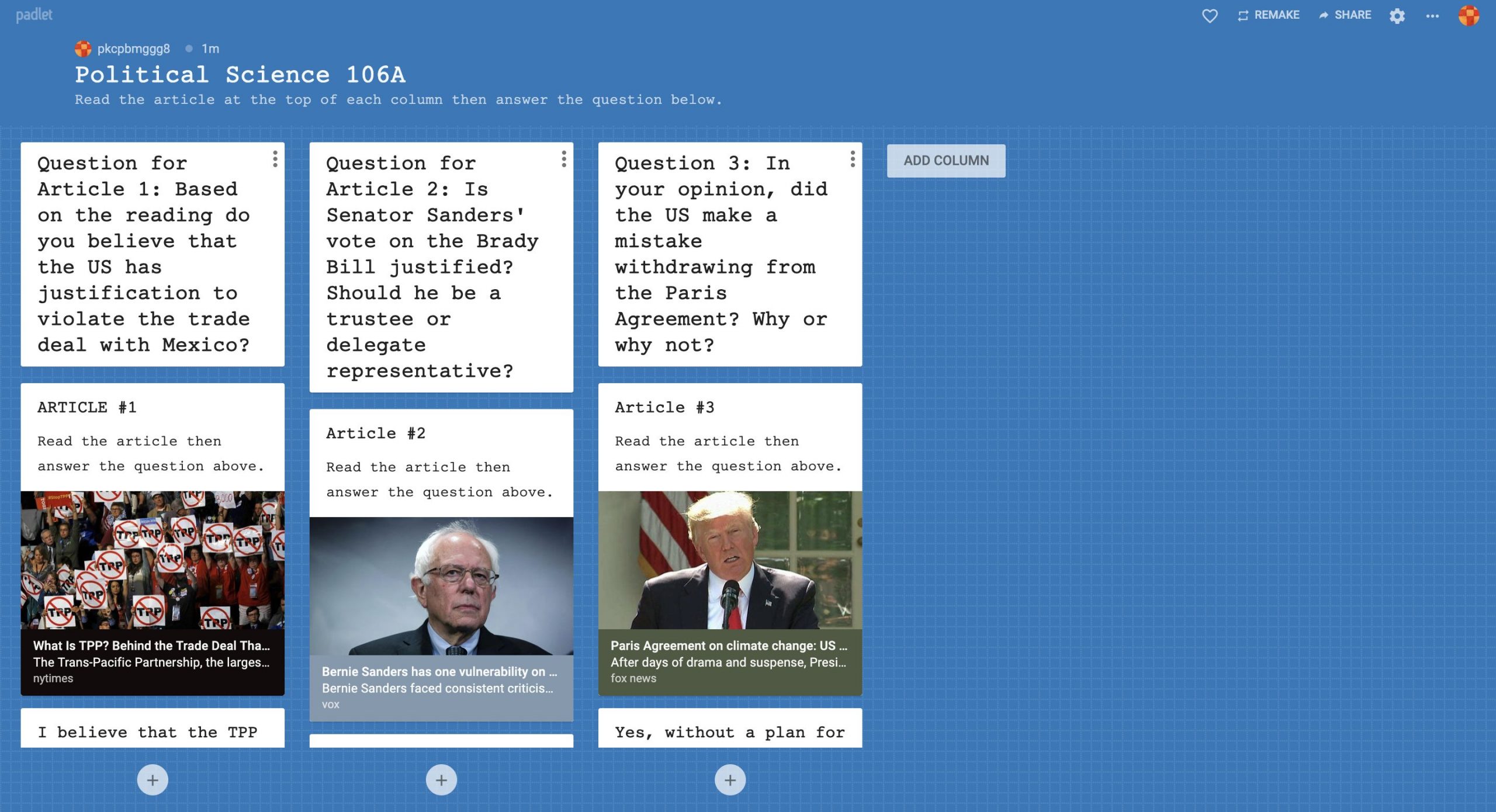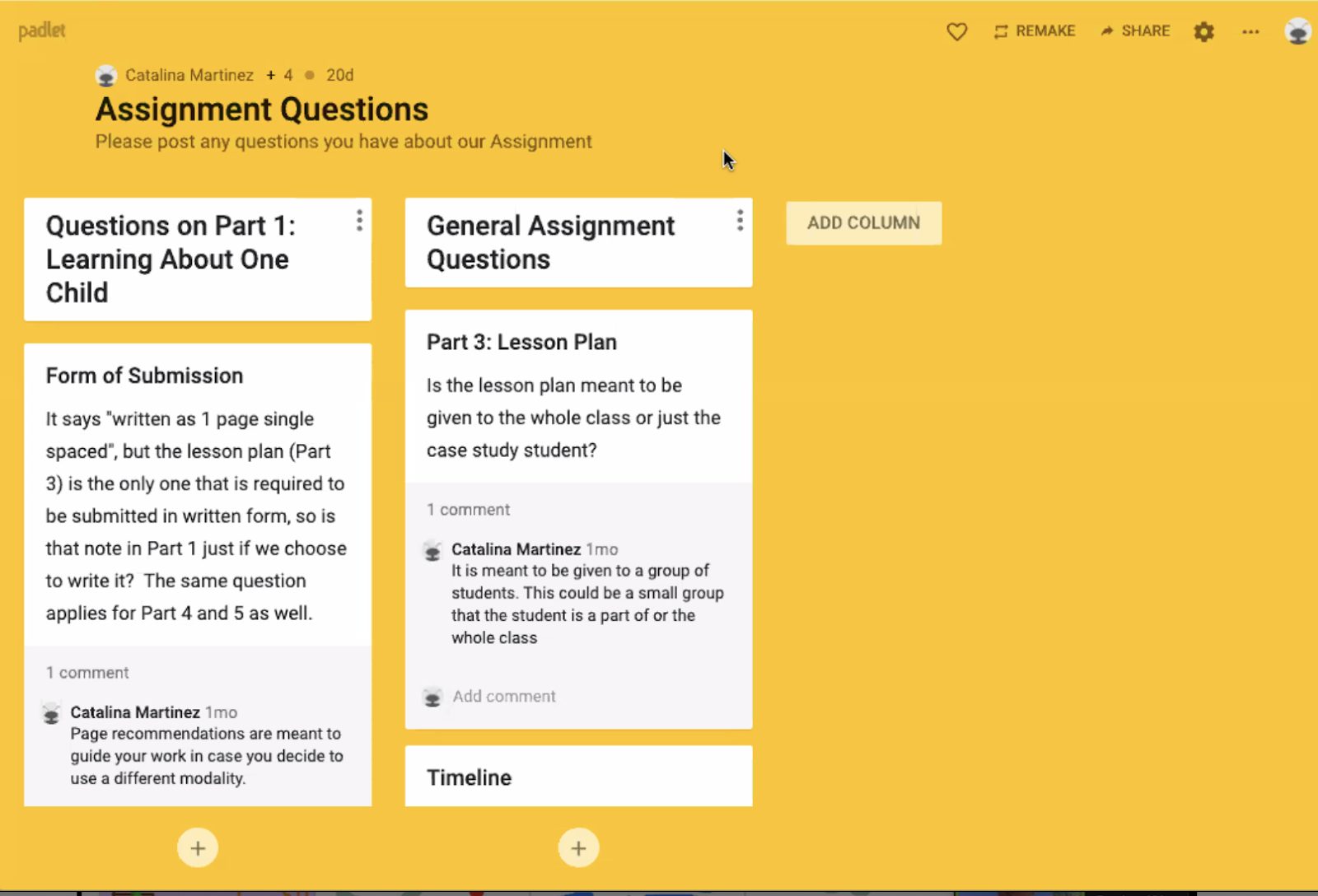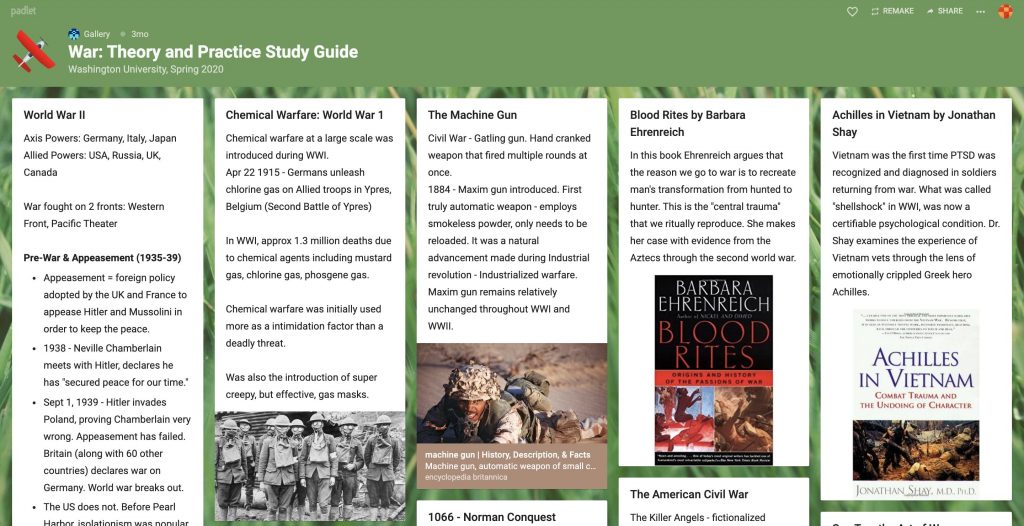Padlet is a versatile tool that can have multiple applications in the classroom and has been aiding educators in their transition to online teaching. Some educators who used Padlet for in-person classes prior to the COVID-19 pandemic have found that it has been just as useful in virtual classrooms. Professor Christopher Cormier states that his classes “were already using Padlet, where at the end of each class, there was a QR code that students could take a picture of, and there were certain questions that students could post on the Padlet.” Now instructors are finding ways to integrate Padlet in new and productive ways.
Using a shareable, custom URL, creators on Padlet are able to share a bulletin board where students can collaborate by making posts to the board while allowing teachers to moderate posts. Padlet is available through its website and also through its mobile application.
Typically, Padlet has been used for classroom tasks that require collaboration, input from many students, and group discussions. During the instructional time, a teacher may ask their students to follow the link to their Padlet and contribute to the board, depending on what the teacher instructs: answers to a question posed by the teacher, students posing their questions, brainstorming ideas, uploading an image of a math solution or even posting a link to their favorite meme. The comments are available on individual posts, making it seamless and easy for instructors and students to reply to specific items on the board.
Pros:
- Privacy settings on the app can be used to customize the extent to which students can participate. Includes a password-protected wall or link-only access.
- Allows for comments on individual feedback without cluttering the board space.
- Notifications allow teachers to moderate the wall in real-time from anywhere.
- Padlet walls can be saved for future reference or to keep records.
- Plugins/extensions are available across internet browsers. Mobile applications are available across iOS, Kindle, and Android stores.
- Makes collaboration in a virtual learning environment easier by allowing users to view and edit both synchronously and asynchronously.
- Unique and creative templates for Padlets such as the traditional wall, grid, stream, map, or timeline.
Cons:
- Subscription-based service at $8/month. The free version only allows accounts to have 3 Padlets, while Padlet Pro allows for unlimited Padlets and a folder organization system.
- Padlet offers many of the same services as other digital boards, but with very limited storage as opposed to platforms like Jamboard.
Examples of use in a digital classroom:
Case 1: Map Padlet
The map Padlet could potentially be used for introductions on the first day of class. This example shows what the map would look like if students were asked to upload a picture of themselves and answer questions like: Where did you spend your summer? What is your favorite color? What is your favorite food? What is your major?

Case 2: Shelf Padlet
The shelf Padlet could be used for answering questions to articles posted to the Padlet by the professors. The example below showcases a professor posting 3 articles and asking students to answer questions related to the articles in the corresponding columns.

Below, we see an additional instance in which Professor Catalina Martinez asked students to post questions about their assignment to a Padlet. As the instructor, she could comment on their posts through her Padlet responses.

Case 3: Wall Padlet
The wall Padlet can be used to create a study guide for students by professors. The example below shows a course about war theory divided by units and sections of the course.

Wall Padlets can also collect responses to a prompt, as shown in the image below, or even a free write. Wall Padlets are especially useful when collecting ideas, as the organizational structure allows for notes to be placed freely anywhere on the page.
External resources:
Padlet for Beginners
https://padlet.com/gallery/studyguidetemplate